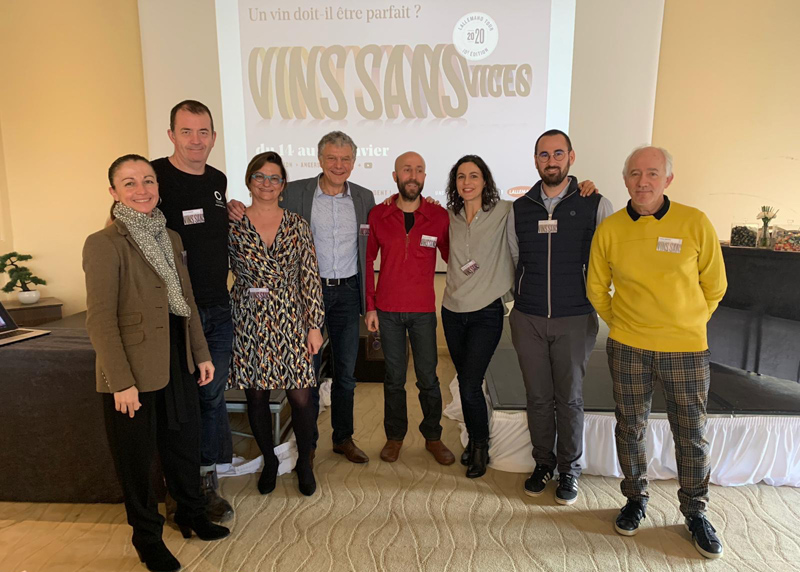
So yesterday I took part in a careers session for the brightest and best undergraduates in plant sciences at the Gatsby summer school. Held at the lovely Hawkhills centre near York, the idea is to enthuse these students about a potential career in plant sciences, and area which is vitally important but which has trouble attracting the best talent. It is tutored by the UK’s top plant scientists, and our session was an add-on, with six people who started out in plant scientists sharing with students about their own particular career path, showing that there are lots of different ways to use a plant science degree or PhD.
The session was followed by a barbecue, and I had a nice chance to chat with some of the scientists. One of them was Johnathan Napier, a researcher from Rothamsted, who has spent the last couple of decades working on developing trangenic (i.e. GM) crops that produce omega 3 fish oils. We had a good discussion about the role of GM in plant science, and the way that this is perceived by the public.
Why would you want to produce fish oils from plants? Principally, food security. Living in a society with surplus food, it’s often easy to ignore the grave threat that global food security faces. The world population is increasing, yet the area suitable for agriculture isn’t. In particular, water for agriculture is under threat, with the depletion and contamination of water supplies. This is going to become a huge issue, particularly in Asia. Whatever our sensitivities to GM technology, this is a powerful tool for plant scientists to use to increase food production efficiency. Currently, fish farming, for all its attendant environmental impact, is by far the most efficient way of producing animal protein. Yet much of the feed for these fish farms comes from fishing itself. A cheap, alternative plant-based source of fish oil would be really useful.
Most of the really interesting work in plant science revolves around transgenics. Yet there are big obstacles to commercializing this work. One is the societal attitudes towards GM. The opposition can be understood when it comes to the worst uses of GM: engineering herbicide resistance into crop plants so that you can then nuke fields with that herbicide and kill everything apart from the crop plant, for example. But there are elegant, beneficial uses of GM, such as golden rice, which is a beautiful bit of technology that could have had huge health benefits, and which was given as a gift by its developers, but which has been strongly opposed.
The other obstacle is intellectual property issues. Many of the techniques used to produce transgenic crops are themselves patented, and if you are going to produce a GM plant and commercialize it, then you enter an IP nightmare where you need to licence a lot of the techniques you have used in producing your GM plant. This can be a real problem, particularly if the people you are dealing with have an unrealistic view of the value of their step in the process.
What of GM vines? Vines need a lot of spraying. Agrochemical use in vineyards is really high, and there’s no way to avoid it. Even organics relies on spraying sulfur and copper to combat powdery and downy mildew. American vines are resistant to these mildews, but they make bad wine. This resistance has a fairly simple genetic basis, and it would be possible to produce GM versions of vinifera grape varieties that didn’t need spraying just by engineering in a few genes.
At the moment, any attempt to field-trial these vines would be hugely controversial, and they’d likely be ripped up by protestors who feel very strongly about this. It’s frustrating for researchers, who have this elegant technology and who could use it for clear societal benefit. I have no doubts that such GM vines would be safe, and not present a threat to the environment.
My only misgivings are the unintended consequences of such a development. One could be a loss of diversity in terms of grape varieties. People would rush to produce GM versions of famous varieties, and these would prove commercially irresistible because of the reduced cost of managing them without spraying. But what about less fashionable varieties? The cost of producing GM versions of more obscure varieties would be prohibitive. Thus GM could produce a vine variety bottleneck with undesirable consequences.
6 Comments on Some thoughts on GM technology

GM crops are definitely a polarising topic that seems to provide little middle ground. What bothers me about the more militant protesters is that they don’t let trials occur without which no real-world evaluation can be done. Without these trials neither side can say whether the technology is safe and / or valuable. That said some of the scientists and companies running the trials do not do themselves any favours with their “trust me it will be fine” attitude and patent lawyers.
It is somewhat selfish that people in the first world are denying others in the developing and third world a potentially beneficial development.
“It is somewhat selfish that people in the first world are denying others in the developing and third world a potentially beneficial development.”
I’d say it is very selfish, and very short sighted as well. While people in the first world realize that we live on a planet with limited resources, most do not see the increasing ability of developing countries to compete for access to those resources.
My primary complaint against those who oppose GM research is the assumption that genes that exist in any species on the planet today have been there since the beginning of life. (For example, the assumption that for billions of years fish oil has never existed in a plant prior to GM.)
This smacks of young-earth creationism.
The problems are twofold, but in the long run the society will have to find ways to regulate Genetic Engineering so it does not end up in a world divided by those who have access and control it, and another half that is made dependent on Genetic Engineering.
The efforts of Monsanto in Southern America are just that, trying to get farmers to plant, spray and sell what they tell them while they are devastating the agricultural social and economic landscape, only to produce cheap soy beans to be used in producing cheap meat.
For Vines it’s very problematic. First, because the vines that could potentially be made resistant to phylaxora, molds and viral diseases – could easily be multiplied and the net revenue for an agro-chemical-pharmaceutical company are close to nil, with no steady stream of revenue. They wouldn’t do that, it’s just not worth for THEM to put research into this direction, and if – they would from fungi/pesticides. I’d even wager to think that they would rip the vines out of the ground themselves, to stop it. Who knows how much astro-turfing is going on in that regard.
Very interesting Jamie. We have just visited Geilweilerhof/JK Institut in Siebeldingen (Palatinate, Germany), that has a leading role in creating PiWi’s (grape varieties with augmented resistance against fungal diseases). Fascinating to hear and see how time expensive the work is: by ‘conventional’ crossing and inbreeding it takes 20 years now (before 30 years) to create a (possibly) valuable new variety that not only has good resistance but also enough wine grape qualities. But just enough: wine quality is genetically much more complex than resistance to mildew, of what the necessary marker genes are identified. It seems impossible though to ‘ennoble’ classic grape varieties like riesling by crossing without losing some vinifera quality. GM technology could probably have much better results, faster and of higher quality. But like you say, it is highly controversial. Good post!
Of course, every wine grape variety is already a GMO, selected and bred for specific genetic characteristics. There is no inherent biological difference between performing your genetic modification in a laboratory vs. performing your genetic modification in the field through successive generations of selection and propagation. The only differences are 1) the time it takes and 2) the precision. If you are looking for a specific characteristic, you would probably prefer to trigger that characteristic directly (“GMO”) rather than to promote its evolution through a few dozen generations of selection and propagation where it will often come bundled with several characteristics that you do not want (“non-GMO”). (In humans, those unwanted characteristics are called “birth defects,” and are universally considered less desirable than “GMO” alternatives.) Meanwhile, there are certain desirable characteristics that will not evolve in a timeframe that’s beneficial to anyone alive at this moment if left to “non-GMO” genetic manipulation as opposed to “GMO” genetic manipulation. My modest proposal: Let’s replant half of the Burgundy Grand Crus to “GMO” vitis vinifera resistant to phylloxera. We can keep the vitis vinifera editions for the non-EU markets since the EU would never deign to accept a “GMO” wine, so they can enjoy their wine made from vines literally taped to the rootstock of an entirely different species, comfortable in the knowledge that they have not indulged in any human manipulations of nature.
Genetic improvement of vitis vinifera is already pretty much in the hands of public research institutions, therefore it would be possible to do the same with biotech or OGM genetic improvement. Funds could be designated by regulators to ensure that enough diversity in conserved. Most people agree, including Dr Vouillamoz speaking at MW symposium, that the current state of affairs with genetic improvement and propagation of v. vinifera hasn’t actually explored enough of the genetic diversity within vitis genus. I believe that biotech can actually used to improve that, not to diminish it. The fact is that most public research in this field, certainly in Italy, France and other European countries, has been mortified by ideological campaigns against “frankenstein food”, lack of public funding, very strict regulatory issues.